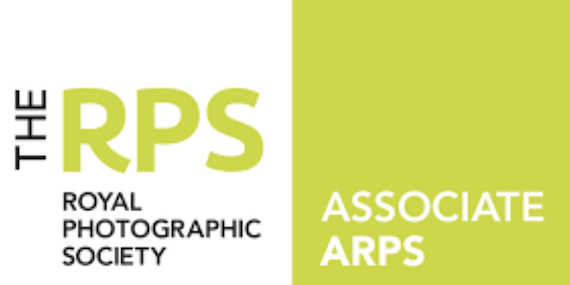Cynthia Morris Sherman (born January 19, 1954) is an American artist whose work consists exclusively of photographic self-portraits, depicting herself in many different contexts and as various imagined characters.
Her breakthrough work is often considered to be "Complete Untitled Film Stills," a series of 70 black-and-white photographs of herself in many of the roles of women in performance media (especially arthouse films and popular B-movies). In the 1980s, Sherman used color film and large prints and focused more on the costume, lighting, and facial expression.
In 1995, Sherman was the recipient of a MacArthur Fellowship.In 2013 she received an honorary doctorate degree from the Royal College of Art, London.
Her breakthrough work is often considered to be "Complete Untitled Film Stills," a series of 70 black-and-white photographs of herself in many of the roles of women in performance media (especially arthouse films and popular B-movies). In the 1980s, Sherman used color film and large prints and focused more on the costume, lighting, and facial expression.
In 1995, Sherman was the recipient of a MacArthur Fellowship.In 2013 she received an honorary doctorate degree from the Royal College of Art, London.
The Self Portrait Of Photography
Over a period spanning 5000 years of history, no other form of art has been so completely taken over by photography as the portrait. If we think of the portraits we know of from the past half-millennium we will notice that the painters in them, portrayed by themselves, are generally more attractive, sympathetic, intelligent, and sensitive looking than non-painters. Even though it was the non-painters who were paying for the whole business, this was often the case. This tradition of self-service was clearly founded by the time of Albrecht Durer, who appears in his own pictures as only marginally less spiritually beautiful than Christ himself, whereas the artist’s brother Hans appears to be just another average-looking man. (source) Even Vincent Van Gogh, showing himself with his head draped in a great white bandage, followed this trend. (source) Talking about the self-portrait in photography requires one to find the root of the tendency in which artists portray themselves; hence I would like to provide some analysis in order to gain a better understanding of the self-portrait in photography. Without thinking very deeply, one might choose from among the painters of the modern age such as Rembrandt and Picasso who were the champions of the self-portrait genre. One might also propose that the general history of development is similar to the self-portrait of the two men, both of whom gradually come to adopt a remarkably impersonal attitude toward their own persons. (source)
This line is perhaps even clearer and more dramatic in the case of Rembrandt, who at the age of thirty proposed that our attention be aimed at themes in persona. Thirty years later, however, Rembrandt gives us not a persona but a thing, a used tool, a thing as unimportant and as interesting as a well-used butcher’s table or an old work glove.
Self-Portrait in the modern era
In today’s world of art, the “self-portrait”, is used in an artistic sense, meaning that it has become a photographic representation of the photographer in all but a few rare cases. (source)
The self-portrait has always grabbed the attention of artists because of the qualities it provides for artists such as the relationship of the dialogues that exist between the photographing subject and the photographed “object”. Both parties determine the photographer’s behavior, relationship, procedure, and result. It has been always an argument among the artists about which one is more important. The artist (creator) or the artwork. We can consider the self-portrait a response to this question; however, there are definitely other aspects in self-portraits such as socio-cultural and reflective self-portraits that are types of reaction to modernism and the condition that contemporary humans live in.
Advantages
The obvious advantage of the self as subject matter for an artist’s work is accessibility. An artist’s “self” is always at hand and spares the artist the expense of travel, fees, model release, and double rooms. When an artist is portraying him or herself, he/or she is able to imprint the most personal of concepts into the work, it is, in a way, a more pure form of an artist’s expression.
Disadvantages
The obvious disadvantages of the self as a subject are the fact that it inevitably raises the issue of conflict of interest. When the artist is also the subject, wearing two hats at once, is he/she first of all reflecting historic trends and artistic justice, or is he/she the agent of self-advancement.
Overview on a self-portrait in photography
If we look back at the development of the self-portrait in photography, since 1922, we are pleased to observe that the developmental growth was influenced by research, experimentation, and the struggle to master content in which the self is the subject and the photographic expression (source). The self-portrait traveled a variety of paths before it came to this tumultuous period. It achieved liberation from prejudice and liberation from the oppression of classical art standards. There also existed freedom from dependencies dealing with painted self-portraits. The self-portrait in photography then justifiably established its own strong and independent foundations; it is now proclaimed without hesitation that the self-portrait is an independent means of expression with its own order, its own rhythm, and its own image. This is known as representational capacity. (source)
Mixing the self-portrait with other types of photography brought new meaning to this art form. For example, when the self-portrait mixes with landscape photography, it adds a new aspect to it. We can take Cindy Sherman’s self-portraits which are mostly involved an urban background as a reaction to consumer societies. Putting self as a subject in photography can represent how the artist (photographer) is trying to examine their own point of view or the victim of the situation they deal with in their life
PHOTOBOOK
